Gender data highlights
 Ensuring strong equitable legal frameworks as an accelerator for gender equality in Africa
Ensuring strong equitable legal frameworks as an accelerator for gender equality in Africa
March 2022 - Legal frameworks that discriminate against women often go hand in hand with larger gender gaps in the economic, social and political spheres. The recently released SIGI 2021 Regional Report for Africa introduces for the first time the SIGI Legal Index, which scores national legal frameworks against their degree of gender-based discrimination. By assessing both formal and informal laws across 15 legal indicators, it takes into account the pluralistic nature of many African legal frameworks. The Africa Gender Index (AGI) (AfDB and UNECA, 2020), which measures gender inequality in outcomes in Africa, reveals the negative impact of such discriminatory laws on gender equality and women’s empowerment.
 The proportion of female doctors has increased in all OECD countries over the past two decades
The proportion of female doctors has increased in all OECD countries over the past two decades
March 2022 - The proportion of female doctors has increased in all OECD countries over the past two decades, and female doctors are on average younger than male doctors. In 2019, almost half of all doctors in OECD countries were female. This ranged from about three-quarters in Latvia and Estonia to less than one-quarter in Japan and Korea. The share of female doctors increased particularly rapidly from 2000 in the Netherlands, Spain, Denmark and Norway, where women accounted for more than half of all doctors in 2019.
 Pay Transparency
Pay Transparency
March 2022 - OECDs "Pay transparency tools to close the gender wage gap", is the first OECD-wide stocktaking of pay transparency measures, and the report finds that half of the 38 OECD countries mandate systematic, regular gender wage gap reporting by private sector firms. This can entail calculating and reporting a range of different wage gap statistics, or the simple overall wage gap, to stakeholders such as workers, their representatives, a government agency, and/or the public.
 The promises of digitalisation for women entrepreneurs in the MENA region
The promises of digitalisation for women entrepreneurs in the MENA region
March 2022 - Digital transformation mitigates some traditional barriers to women’s entrepreneurship in the Middle East and North Africa (MENA). The series of regional dialogue organised by the MENA-OECD Women’s Economic Empowerment Forum (WEEF) highlighted the potential benefits of the ongoing changing nature of entrepreneurship for MENA women’s entrepreneurs. The digitalisation of production processes and adoption of digital technology by businesses allow for new business models and facilitate the realisation of entrepreneurial projects operating from home. For example, online payment and e-commerce innovations simplify trade across borders and enable entrepreneurs to reach new markets, wherever they are. In addition, tech companies tend to be less capital and labour intensive.
 Women in senior management roles at energy firms remains stubbornly low, but efforts to improve gender diversity are moving apace (IEA 2021)
Women in senior management roles at energy firms remains stubbornly low, but efforts to improve gender diversity are moving apace (IEA 2021)
March 2022- It has been well-documented that women in leadership positions enable companies to maximise the power of diverse perspectives and innovative decision making, which improves the overall success of a firm’s performance. S&P 500 companies with women in senior management above the median saw a 30% higher return on equity and a 30% lower earnings risk relative to lower-ranked peers (Bank of America Global Research). et, historically women have been consistently under-represented in senior managerial positions and in the boardroom across industries, even more so in energy-related sectors.
 Financing Women, Peace and Security in fragile contexts
Financing Women, Peace and Security in fragile contexts
March 2021 - 2020 marked an important milestone with the 20th anniversary of United Nations Security Council Resolution (UNSCR) 1325 on Women, Peace and Security (WPS). Twenty years following adoption of UNSCR 1325, there is important political momentum to assess progress made by the WPS agenda, especially in the context of COVID-19. COVID-19 has exacerbated inequalities worldwide; it has also exacerbated conflict. Such conflict significantly affects women and girls, and contexts that feature larger gender inequalities often feature increased rates of violence towards women and girls. Donor investment in the WPS agenda means investment into women's political empowerment, women's role in the peace process, and addressing gender-based violence, among others.
 It’s time to close the gender gap in research
It’s time to close the gender gap in research
March 2021 - Women are under-represented in the population of scientific authors: Much progress has been made in the campaign for gender equality, yet women still face significant barriers to advancement in the workplace. This is particularly true for researchers. Results from the latest OECD International Survey of Scientific Authors (ISSA2) show that women are under-represented in research careers, as they are in many other sectors. On average across OECD countries, women comprise only around 40 percent of all researchers – ranging from 23 percent in Luxembourg to 56 percent in Lithuania – and they are considerably less likely to be in leadership positions.
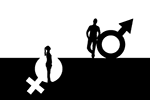 Measuring masculine norms to better understand the invisible barriers to women’s economic inclusion
Measuring masculine norms to better understand the invisible barriers to women’s economic inclusion
March 2021 - Over the past 20 years, women’s global labour force participation rate has remained constant at around 50%, while the gender gap in labour force participation remains high at 27 percentage points (ILO, 2020; OECD, 2020). This lack of progress highlights the failure to promote women’s inclusion in the labour market and in employment. In particular, discriminatory social institutions – including laws, social norms and commonly accepted practices—constitute some of the most powerful driving forces behind both the unequal outcomes and the slow progress (OECD, 2019).
 COVID-19 threatens to undo progress made in closing the gender gap in entrepreneurship
COVID-19 threatens to undo progress made in closing the gender gap in entrepreneurship
March 2021 - The COVID-19 pandemic is having a profound shock on economies and labour markets around the world, and the impact of this crisis on women is stark. Women make up nearly 70% of the health workers on the frontlines against COVID-19, exposing them to a greater risk of infection. They also continue to do to up to ten times the amount of unpaid care work in households that men do, and face higher risks of economic insecurity.
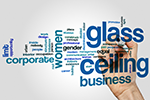 What big data can tell us about women on boards
What big data can tell us about women on boards
March 2020 - The OECD Analytical Database on Individual Multinationals and their Affiliates (ADIMA) shows that women are under-represented in boardrooms across all industries and though there are signs of improvement, a glass ceiling continues to exist even within the Boardroom hierarchy. Women make up only 16% of board members in the top 500 MNEs (by market capital) according to ADIMA, with shares as low as 12% in the technology sector. Even in the best performing sector - Consumer Non-Cyclicals (companies producing household staples) - women make up less than one-fifth of the boardroom.
Addressing femicide in the context of rampant violence against women in Latin America
March 2020 - Violence against women (VAW) in Latin America and the Caribbean (LAC) constitutes a pervasive issue, which culminates into high rates of femicides – or feminicides. The Social Institutions and Gender Index (SIGI) regional report on LAC reveals that 27% of women in the region had suffered violence from an intimate partner at least once in their lifetime, reaching 33% in South America. The issue stems from legal frameworks that fail to comprehensively cover all forms of violence against women.
How can more women have the right skills to successfully start a business?
March 2020 - Women in OECD countries are about 50% less likely than men to be involved in launching or running a new business. Women-operated businesses are also less likely to create jobs for others. Moreover, women, on average, tend to operate different types of businesses than men. While women start firms in all sectors, including technology-intensive sectors, 13.3% of self-employed women in 2018 were operating in health and social work sectors and 11.5% in service sectors such as cleaning of textile products and physical well-being activities.
Wide gap in pension benefits between men and women
March 2020 - Data shows that across European OECD countries, pension payments to women aged 65 and over were 25% lower, on average, than for men. Differences are above 40% in Germany, Luxembourg and the Netherlands, while in Denmark, Estonia and the Slovak Republic the pension gap is lower than 10%.
Aid to gender equality
March 2020 - In 2018, another crisis struck the aid system exposing a pattern of sexual exploitation, abuse and harassment (SEAH). That same year, 205 allegations of SEAH involving UN Staff were reported and 123 allegations involving implementing partners.
The global outrage prompted by the scandal was long overdue. Aid agency staff work alongside vulnerable populations, leading to vast power imbalances between the providers of aid and the people they are trying to help. Women and girls are particularly vulnerable.

Why don’t more girls choose STEM careers?
March 2019 - While in most countries women represent a majority of all graduates from tertiary education, fewer women than men complete Science, Technology, Engineering and Mathematics (STEM) university degrees. New results based on data from the OECD Programme for International Student Assessment (PISA) shed light on the role of relative academic strength in determining the extent of this gap.
 Girls are more exposed than boys to cyberbullying
Girls are more exposed than boys to cyberbullying
March 2019 - Digital technologies are radically and rapidly changing the way people work, consume, get information and communicate with each other. How’s Life in the Digital Age? provides a comprehensive overview of how the digital transformation is impacting people’s lives, and highlights that some of these impacts are very different between women and men.
 Are women entrepreneurs more likely to work out of the home?
Are women entrepreneurs more likely to work out of the home?
March 2019 - Self-employed women are consistently more likely than self-employed men to work out of their home (see Figure). The only exceptions are Norway, Denmark and Portugal. The gap is particularly striking in Turkey, the United Kingdom and the Czech Republic, where the proportions self-employed women working from home are more than double those of men.
March 2019 - Legal reforms and transformative gender policies and programmes conducted by governments, civil society, philanthropy and the private sector are starting to pay off. The Social Institutions and Gender Index (SIGI) 2019 results indicate that the global level of discrimination in social institutions – i.e. formal and informal law, social norms and practices - is 29%, ranging from 8% in Switzerland to 64% in Yemen.
 Can role models encourage woman to step off the beaten path and become entrepreneurs?
Can role models encourage woman to step off the beaten path and become entrepreneurs?
March 2019 - In virtually all countries around the world, there exists a gender gap in self-employment rates. In the OECD area, only one in ten employed women is self-employed, compared to one in five men. These gender differences raise the question of what factors in people’s lives might encourage them to become entrepreneurs. Could role models have an influence? Recent findings from the Facebook-OECD-World Bank Future of Business Survey (December 2018, covering 95 countries) reveal that, on average, close to half of all surveyed entrepreneurs had a role model when growing up.
 Women are well-represented in health and long-term care professions, but often in jobs with poor working conditions
Women are well-represented in health and long-term care professions, but often in jobs with poor working conditions
March 2019 -Women make up the majority of the overall health and social workforce: across the OECD around 3/4 of people working in health and social care are women, i.e. 20 million women compared with 6.3 million men. But, women working in the health and social care sector are often in lower-paid jobs.
 Achieving gender balance in corporate leadership in the Middle East and North Africa (MENA)
Achieving gender balance in corporate leadership in the Middle East and North Africa (MENA)
March 2019 - Globally, women’s labour force participation rates have moved closer to men’s over the past few decades, but in every country women are still less likely than men to engage in paid work. When women do work, they are more likely to work part-time, are less likely to become managers or board members, and on average they earn less than men.
 Increasing use of gender mainstreaming tools across the OECD
Increasing use of gender mainstreaming tools across the OECD
March 2019 - Tools and levers such as structural policies, budgets, regulatory frameworks, and procurement processes – when accompanied by gender-sensitive lens – have a strong potential to advance women’s economic empowerment including full participation in the labour market, addressing occupational discrimination and supporting female entrepreneurship and access to finance.
 Women in the digital era: Internet use and skills at work
Women in the digital era: Internet use and skills at work
March 2018 - As the world is #GoingDigital, structural changes across economies and societies deeply affect daily life for most people. Individuals, especially younger generations, are increasingly connected thanks to faster and cheaper access to broadband and the widespread use of mobile technologies. Jobs are being transformed too: the digital transformation at work is allowing new work arrangements to emerge, some of which hold the promise of more flexibility, in terms of workplace and working hours, for instance.
 Women with low levels of education face a double disadvantage in the labour market
Women with low levels of education face a double disadvantage in the labour market
March 2018 - Gender employment gaps are persistent. OECDs 2017 The Pursuit of Gender Equality: An Uphill Battle showed that despite decades of progress, women are still much less likely than men to engage in paid work and, when they do work, are less likely to progress in their careers or become business owners, more likely to work shorter hours, and end up stuck in precarious, low-status jobs.
March 2018 - Today, small businesses have a menu of digital tools that allow them to leverage global connections and market directly to potential customers all over the world. Thereby they can overcome barriers to trade which typically weigh more heavily on smaller firms with smaller economies of scale.
March 2018 - Female entrepreneurs are less likely than male entrepreneurs to expect to create a lot of jobs with their businesses. During the period 2012-16, 8.8% of women entrepreneurs in OECD countries expected that their business will generate at least 19 new jobs over the next five years. This gender gap in growth expectations can be explained by a number of factors, including differences in entrepreneurial motivations and intentions. Some women appear to be more likely to go into self-employment to better manage their work-life balance and others start businesses to avoid the “glass ceiling” in employment. However, women entrepreneurs are also more likely to operate in service sectors where there is less growth potential.
 Gender-sensitive parliaments: Integrating a gender lens in parliamentary work
Gender-sensitive parliaments: Integrating a gender lens in parliamentary work
March 2018 - Parliaments are the supervisor of gender equality in public life. They can scrutinise the government’s gender equality actions through questioning cabinet members and holding public hearings (used in 72% of OECD countries), as well as reviewing gender equality reports issued by government departments (used in 64% of OECD countries). Parliaments can also oversee budget cycle processes and guarantee that expenditures equally benefit men and women, for example, by ensuring allocation of sufficient funds or requesting gender-disaggregated statistics to monitor impact.
March 2018 - Transforming traditional gender roles and promoting gender equality requires addressing discriminatory social norms. The need to change boys’ and men’s attitudes towards caregiving and other unpaid work and ensuring that men are not stigmatised when they take on care responsibilities is a keystone of gender equality (OECD, 2017). Social norms shape acceptable roles, opportunities and behaviours for women and men in society and the household. Deeply entrenched gender stereotypes confine men to breadwinning and view unpaid care work as a female prerogative.
 How do partners in couple families share paid work?
How do partners in couple families share paid work?
March 2017 - The dramatic increase in the number of women and mothers in the workforce in recent decades has led to large shifts in the way partners in couple families share and organise paid work. In many OECD countries, the dominance of the traditional male-breadwinner model is now largely a thing of the past. In most countries, fewer than one in three couples with at least one child have a father who works 40 or more hours per week and a mother who is not in paid work, and in Belgium, Denmark, France, Norway and Sweden, this falls to below one in ten couple families.
 Once over the barriers to start-up, women feel as confident as men about their enterprise
Once over the barriers to start-up, women feel as confident as men about their enterprise
March 2017 - A new online monthly survey, the Future of Business Survey, reveals encouraging findings about the level of confidence of women who own businesses with an online presence.
Typically, countries show gender gaps in factors that are important for entrepreneurship. On average, men are more likely than women to declare that they would have access to money to set up a business and to training to help them do so.
 Do women have equal access to finance for their business?
Do women have equal access to finance for their business?
March 2017 - Women are less likely than men to report that they can access the financing needed to start a business in all countries except for the United States, Mexico, Greece and Indonesia, where men and women are equally likely to report to have access to finance (see figure below). This gender gap can be associated with women having lower levels of experience, operating in highly competitive and low-growth sectors, as well as gender-biased credit scoring and gender stereotyping in investment evaluations. Women are also often hindered by less access to basic financial services (e.g. checking and savings accounts).
 Women make up most of the health sector workers but they are under-represented in high-skilled jobs
Women make up most of the health sector workers but they are under-represented in high-skilled jobs
March 2017 - The current overall health workforce is mostly composed of women. Nonetheless, female health workers remain underrepresented in highly skilled occupations, such as in surgery. As of 2015, just under half of all doctors are women across OECD countries on average. The variation across countries is significant: in Japan and Korea only around 20% of doctors are women, in Latvia and Estonia this proportion is over 70%.
 The pursuit of happiness: does gender-based discrimination in social institutions matter?
The pursuit of happiness: does gender-based discrimination in social institutions matter?
March 2017 - Gender-based discrimination in social institutions has recently been estimated to be a burden for economic growth. Globally, the current level of discrimination in formal and informal laws, social norms and practices, measured by the OECD Development Centre’s Social Institutions and Gender Index - SIGI - is estimated to lead to a significant GDP-loss and a gradual dismantling of gender based discriminatory social institutions by 2030 could increase the annual GDP global growth rate by 0.03 to 0.6 percentage points over the next 15 years, depending on the scenario and the prevalence of existing gender gaps (Ferrant and Kolev, 2016).
 Women in the Judiciary: working towards a legal system reflective of society
Women in the Judiciary: working towards a legal system reflective of society
March 2017 - In recent decades, the number of women in the judiciary has significantly increased worldwide. In many countries around half of law students are women, and 2014 data shows that women in OECD countries make up more than 54% of professional judges. But women are still vastly underrepresented in top-ranking judicial positions including on High Court benches and other senior roles in the legal profession.
 Women in scientific production
Women in scientific production
March 2016 - Gender equality forms part of research and innovation policy in many countries and organisations. It aims to promote equal participation and opportunities for women and men in research careers, encompassing issues ranging from compulsory education to gender balance in scientific decision-making. Achieving parity in participation in tertiary education is of particular importance, especially in research degrees, as this provides an increasingly important entry mechanism into research careers and senior roles across the science and innovation system.
March 2016 - One of the most remarkable consequences of the expansion of education in OECD countries over the past decades is the reversal of the gender gap in education. From outright exclusion and discrimination in educational institutions less than a century ago, girls and young women have conquered schools and colleges. In 2013, 55% of all students graduating from a general secondary education programme were girls.
 Gender gap in entrepreneurship and entrepreneurial risk
Gender gap in entrepreneurship and entrepreneurial risk
March 2016 - There are inherent risks when choosing to set-up a new business. However, some of these risks, like attaining a satisfactory work-life balance are often more inhibiting for women than for men. In fact, independently of a country’s economic context and the overall cultural attitude toward entrepreneurship, women always appear less prone to take the risk of creating their own business than men.
Gender gaps in cancer mortality remain large in OECD countries, but starting to narrow
March 2016 - The gender gap in mortality from cancer remains large in OECD countries, with mortality rates among men being nearly 70% higher than among women on average (as shown in the last edition of Health at a Glance 2015). But the good news is that this gender gap has narrowed since the mid-1990s as mortality rates among men declined more rapidly. This gender gap in cancer mortality can be explained by a greater prevalence of risk factors among men, notably higher smoking rates.
 Does gender discrimination in social institutions matter for long-term growth?
Does gender discrimination in social institutions matter for long-term growth?
March 2016 - A recent study by the OECD indicates that gender-based discrimination in social institutions impedes economic growth. Deeply entrenched discrimination in formal or informal laws, social norms or practices poses significant and enduring obstacles for women worldwide. According to the OECD study, there is a strong negative relationship between gender-based discrimination in social institutions, measured by the OECD’s Social Institutions and Gender Index (SIGI), and income per capita.
 Integrating gender equality into climate change action
Integrating gender equality into climate change action
March 2016 - In recent year, progress has been made in recognising the gendered impacts of climate change and women’s key contribution to developing effective and locally appropriate climate solutions. The landmark Paris Agreement adopted at COP21 marks another important step forward by providing a mandate for advancing the integration of gender equality into adaptation measures and capacity-building activities. Yet, the real litmus test will lie in how political commitments translate into progress on the ground.
 Progress for women and girls in the 2030 Agenda for Sustainable Development
Progress for women and girls in the 2030 Agenda for Sustainable Development
September 2015 - The UN Sustainable Development Goals could be a real game changer for gender issues, with wins in fraught areas such as reproductive rights. But there will be challenges, and opposing voices, to contend with in the years ahead.
© OECD Observer
 Why quotas work for gender equality
Why quotas work for gender equality
June 2015 - Gender inequality is one of the most primitive and oldest forms of inequality. Sadly, it is still very much a reality in most parts of the world. In many countries women do not have equal access to education, healthcare, safety, work or political decision-making.
© OECD Observer
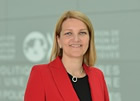
Why a push for gender equality makes sound economic sense
June 2015 - This year’s OECD Forum coincides with the celebration of the 20th anniversary of the Beijing Declaration, which was an important milestone to promote gender equality worldwide. Much has been achieved since 1995, but unfortunately, a lot remains to be done to close the gender gap and increase women’s participation in our economies and societies.
© OECD Observer

Korea's work-life balance policies for sustainable growth
June 2015 - Of the abundant resources given to mankind, what is the most underused resource of our time? Without a doubt, women!
The potential of women must be fully tapped if we are to secure a path to sustainable development and address the ever-decreasing working-age population in the post-2015 era.
© OECD Observer
June 2015 - The 30% Club is a group of company chairmen, chairwomen and CEOs committed to achieving better gender balance at all levels of their organisations through voluntary actions.
Business leadership is key: this takes the issue beyond a specialist diversity effort and into mainstream talent management. This is a collaborative approach to creating change.
© OECD Observer
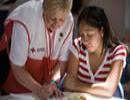 Women are catching up to men in volunteering, and they engage in more altruistic voluntary activities
Women are catching up to men in volunteering, and they engage in more altruistic voluntary activities
March 2015 - Over the last six years women have increased their participation in volunteering and are today almost on par with men. The biggest increase in female participation in voluntary activities was registered in Italy, the Slovak Republic, Canada and Estonia. In many countries a gender dimension is more apparent in specific sectors and voluntary roles rather than in overall participation rates in volunteering. Men are much more likely than women to volunteer in sports associations, while women make up the majority of volunteers active in the social and health sector.
 Gender gaps in secondary education and early marriage
Gender gaps in secondary education and early marriage
March 2015 - Closing gender gaps in education by improving female education require addressing discriminatory social norms such as early marriage. Education is essential for women’s and girl’s empowerment, but social norms, such as early marriage, force girls to abandon their education limiting educational opportunities. This is extremely important for developing countries where increased female education can be a catalyst for change leading to better health and employment outcomes and increase women’s decision-making power.
 Aid to fragile states and economies targeting gender equality
Aid to fragile states and economies targeting gender equality
March 2015 - In October 2015, it will be 15 years since the adoption of the landmark United Nations Security Council resolution 1325 on women, peace and security. While greater political attention at the international level has contributed to an increased focus on gender equality in donor support to fragile states, only a small proportion of aid to fragile states addresses women’s needs and priorities.
March 2015 - For most people, the Internet is now part of everyday life. On average, about 80% of adults and 95% of 16-24-years-olds in the OECD use the Internet, most of them on a daily basis. And so do women, with the gender gap in Internet use closing up in a majority of OECD countries. In 2005, only 55% of women and 61% men were Internet users while these ratios have now reached 80% and 82% respectively.
March 2015 - Are the gender differences found in mathematics or reading performance also observed in financial literacy performance? The 2012 PISA financial literacy assessment revealed that there are no gender differences in financial literacy scores among 15-year-old students in most countries and economies participating in the exercise. Only in Italy do boys perform better than girls, but differences are small.
March 2015 - Unequal pay between men and women continues to pose problems, despite decades of legislation by governments to address it, like the Equal Pay Act in the United States and the French labour code on wage equality introduced about half a century ago. In fact, not only are women still paid considerably less than men throughout the world, but UN predictions suggest the gap will persist for 70 years to come.
© OECD Observer
 Forging a gender-balanced economy
Forging a gender-balanced economy
June 2014 - “I am only a woman!” declares Sybylla Melvyn with deliberate irony, in the Australian classic novel, My Brilliant Career. When Miles Franklin wrote the novel in 1901, aged just 19, she was embarking on her own career path, and though successful, like Sybylla, she encountered many social, economic and cultural hurdles along the way.
© OECD Observer
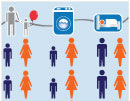
Balancing paid work, unpaid work and leisure
March 2014 - Greater gender equality in working hours is not just about more women in full-time employment. It is also about more men reducing their long hours in paid work. Although detailed information is available for a limited number of OECD countries, data on the usual hours worked per week illustrate how the prevalence of long and short working hours differs across countries and the sexes.

March 2014 - Boys continue to outperform girls in mathematics by the equivalent of around three months of school, that is an average of 11 score points in the PISA assessment. Across OECD countries 15% of boys but only 11% of girls achieve at the highest levels of proficiency in mathematics. By contrast, girls outperform boys in reading in all countries by an average of 38 score points (across OECD countries) - the equivalent of one year of school.

March 2014 - In many OECD countries, women’s representation is much higher in public sector than in private sector employment. In 2010, women accounted for less than 45% of workers in the total labour force but for 57% of public sector employees in OECD countries.

Financing the unfinished business of gender equality beyond 2015
March 2014 - The third Millennium Development Goal (MDG 3) – to promote gender equality and empower women – has been a catalyst in galvanising new resources for gender equality and women’s rights. Bi-lateral donors’ aid in support of gender equality has tripled since the MDGs from USD 8 billion in 2002 to USD 24 billion in 2012. Most of this aid went to education and health.
 Closing the gender gap can boost the economy
Closing the gender gap can boost the economy
March 2014 - Reconciling work and family commitments is a challenge in every country, but particularly for Japanese men and women. Much more so than in most other OECD countries, men and women have to choose between babies and bosses: men choose bosses, women less so, but on the whole there are very few babies and there is too little female employment. These shortcomings are increasingly coming to the fore and will have to be addressed.
© OECD Observer

Who wants to be an entrepreneur?
March 2013 - Fewer women than men become entrepreneurs. In 2012, only 18% of women in the OECD (and 32% of men) have ever started or are taking steps to establish a business (See the chart below). There are even fewer women among business owners with paid employees.

Crisis cuts gender jobs gap but everyone loses
March 2013 - The economic crisis has affected men and women differently in the job market. On average in the OECD, female employment rates have held up at 57%, while male employment rates fell from 75.7% in the first quarter of 2007 to 73% in the third quarter of 2012, the gender employment gap got smaller, but not in the way we would have liked.
 Where are tomorrow’s female scientists?
Where are tomorrow’s female scientists?
March 2013 - In reading, 15-year-old girls outperform 15-year-old boys (by the equivalent of roughly one year of school), while in mathematics boys outperform girls (though by a narrower margin, the equivalent of less than half a year of school); in science there is instead little difference between boys’ and girls’ performance. Yet dig a little deeper and a more nuanced picture emerges.
March 2012 - Women’s contribution to technological progress is substantial and increasing in all countries. But are countries taking full advantage of women's innovative ideas? Do women with good ideas manage to turn them into marketable products?
March 2012 - Greater gender diversity in companies’ boardrooms can lead to better management. However, we are still far from a consensus on the best way to improve women’s representation on boards.
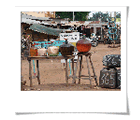
March 2012 - Informal employment is widespread throughout the developing world where it concerns over half to three-quarters of non-agricultural employment. A recent data collection carried out by ILO and Women in Informal Employment Globalizing and Organizing (WIEGO) provides evidence that women are more likely than men to work in the informal economy.
Related Documents


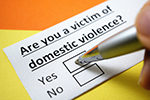



 Digitalisation facilitates trade, but participation and patterns still differ for male and female entrepreneurs
Digitalisation facilitates trade, but participation and patterns still differ for male and female entrepreneurs Women-dedicated business incubators and accelerators can stimulate growth intentions and support high potential female entrepreneurs
Women-dedicated business incubators and accelerators can stimulate growth intentions and support high potential female entrepreneurs Entrenched social norms prevent the equal distribution of caring responsibilities between men and women
Entrenched social norms prevent the equal distribution of caring responsibilities between men and women Gender gap in education
Gender gap in education

 What do women do online?
What do women do online?


